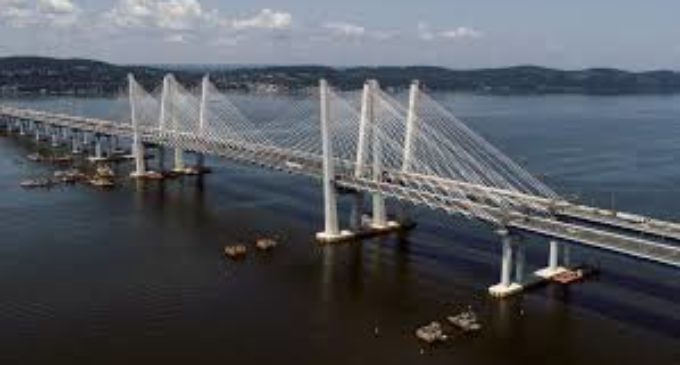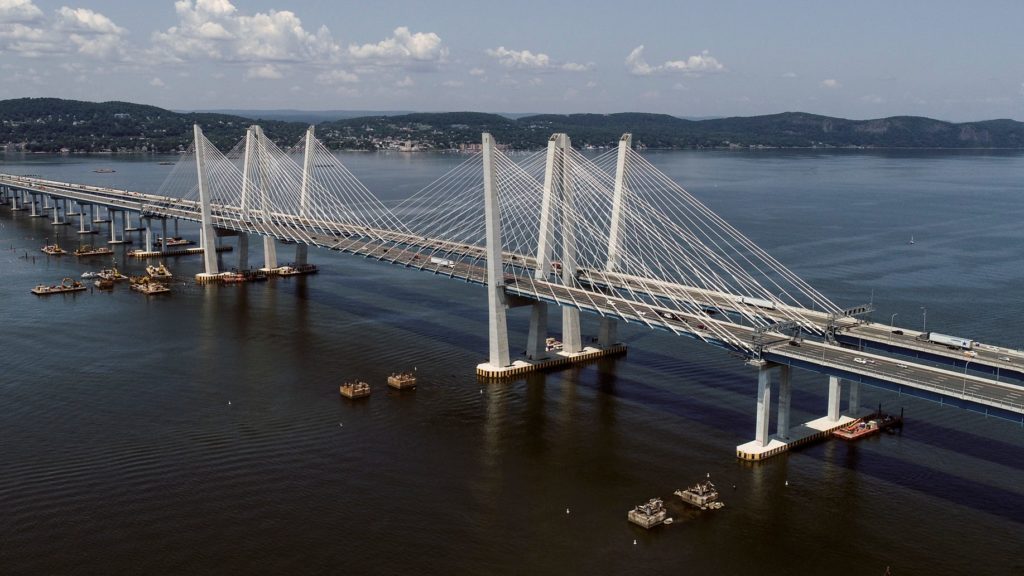‘Snapping Bolts’ Questioned In 2017 New York Bridge


MEDIA SPOTLIGHT – The Mario Cuomo Bridge, which replaced the rickety and heavily-trafficked Tappan Zee Bridge in 2017, has snapping bolts that create “structural safety” issues that could lead to its collapse, the Albany Times Union reported.
An eight-month investigation found that “Tappan Zee Constructors, the private corporation building the bridge for the state authority, may have committed fraud by concealing the fact that large numbers of bolts had been breaking due to either improper installation techniques, manufacturing defects, or both.”
The Cuomo bridge is a twin cable-stayed bridge connecting Rockland and Westchester counties 20 miles north of New York City. The bridge crosses one of the widest parts of the Hudson River and is the longest bridge in New York State. The bridge cost $3.9 billion with construction starting in 2013.
“In January 2016, an ironworker got hit in the face with part of a bolt that snapped when he was trying to use a torque wrench to tighten it, with the piece of metal ricocheting off an overhang and splitting his lip open when he looked up,” the Times Union reported.
“When you look at them, bro, the heads of them were like hollow, bad spot, sometimes the shank-lead to the thread has got a hollow spot,” one of the ironworkers told James McNall, the project’s safety director at the Port of Coeymans, the Times Union reported.
McNall, who was fired later in 2016 after problems with the bolts kept happening, secretly recorded conversations with engineers and ironworkers handling the bridge assembly at the port. He played them for a quality-assurance inspector at Alta Vista, a private firm hired by the New York State Thruway Authority. McNall told the inspector that Tappan Zee Constructors may have committed fraud.
A whistleblower reported the issue and worry began that bolt snapping could lead to a collapse of the bridge.
The Times Union obtained records stemming from a False Claims Act case filed by McNall in the state Supreme Court, but the case has remained under seal since 2017.
The New York inspector general and the attorney general have launched investigations, the Times Union reported. The AG investigation “devolved from seeking an incisive probe of the bolt failures to pursuing an effort to arguably downplay the severity of the allegations, including any potential structural threat to the bridge,” Times Union reporter Brendan Lyons wrote.
A confidential report from the Thruway Authority put the likelihood of bolts failing at 1%, but also listed a snapping rate as high as 50% as a “worst-case scenario,” the Times Union said.
“We spent more than $1 million and engaged world-renowned subject matter experts, developed a testing program, conducted extensive studies, and examined more than 500 bolts,” a Thruway Authority spokesperson said. “The tests confirmed that the bolts met or exceeded the requirements set forth by the American Society for Testing & Materials, which sets standards that govern the industry.”
When asked if the Thruway Authority would be in favor of unsealing the court documents, the spokesperson replied: “As much as we would like to share more information, we are unable to discuss it further at this time.”
The bridge was named after Mario Cuomo, New York’s governor from 1983 to 1994.
Editor’s Note: Articles in Media Spotlight are excerpts from publications that show the industry what the public is reading about fasteners and fastener companies.


There are no comments at the moment, do you want to add one?
Write a comment